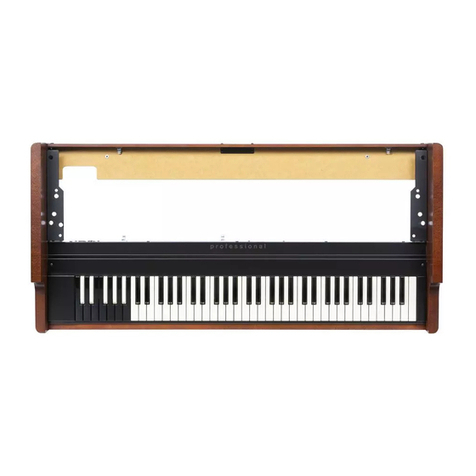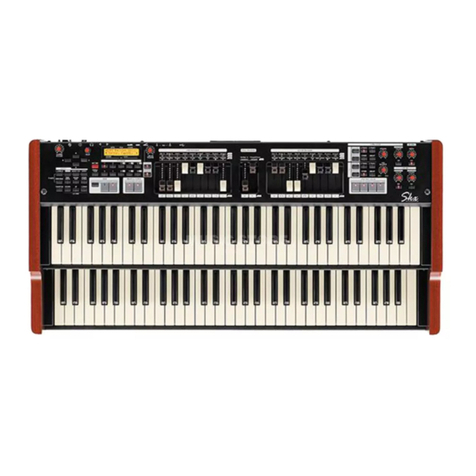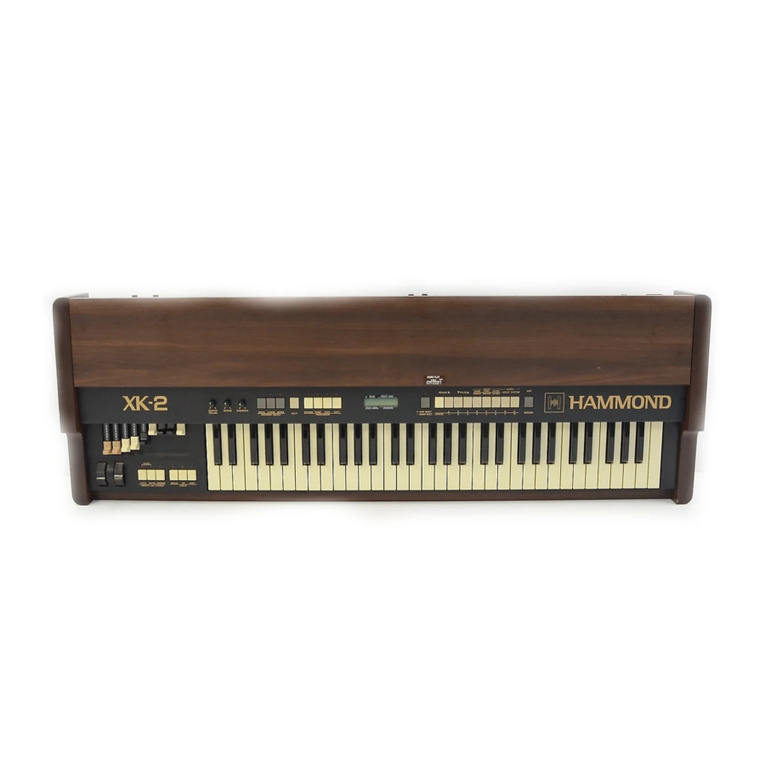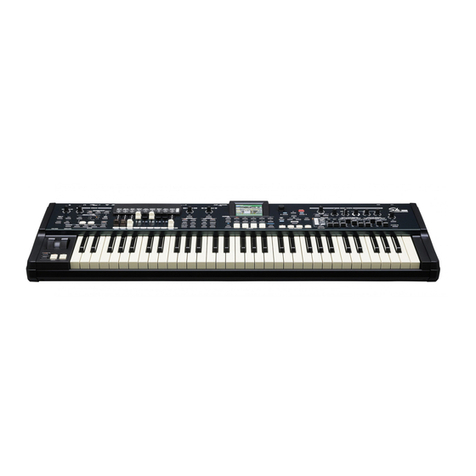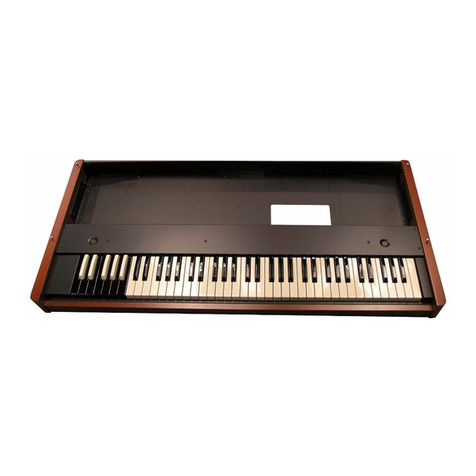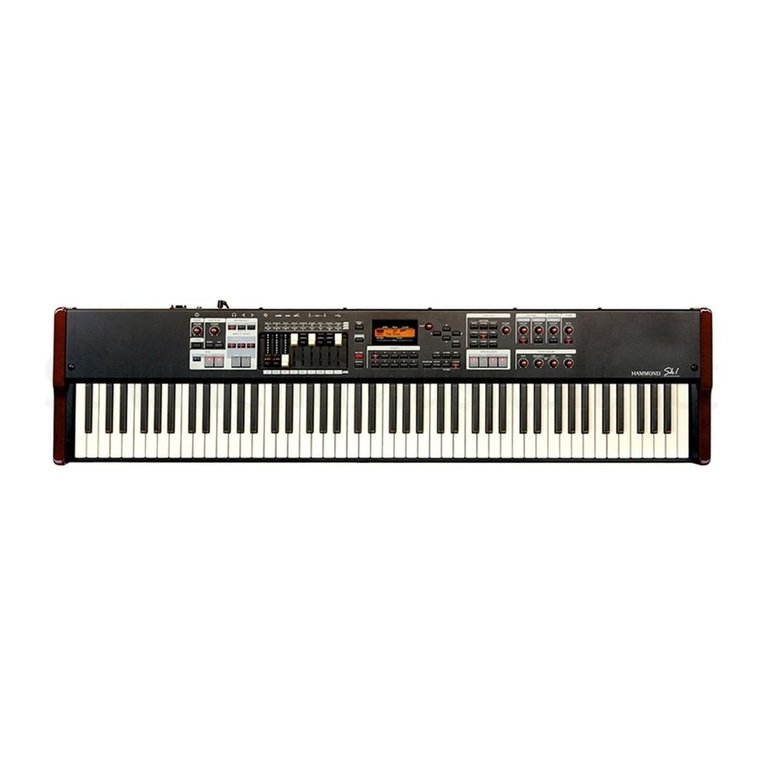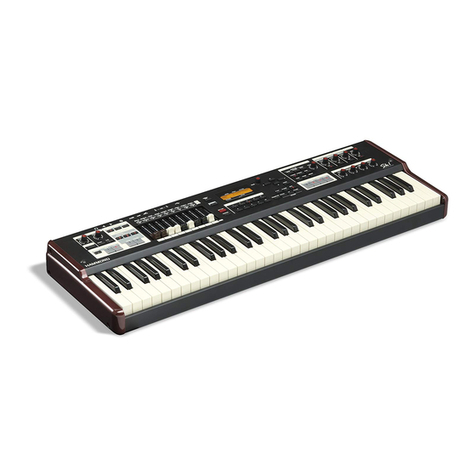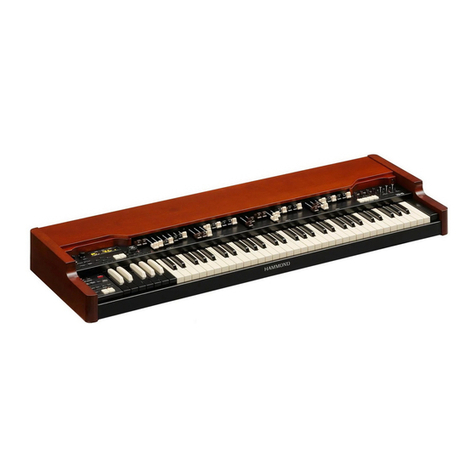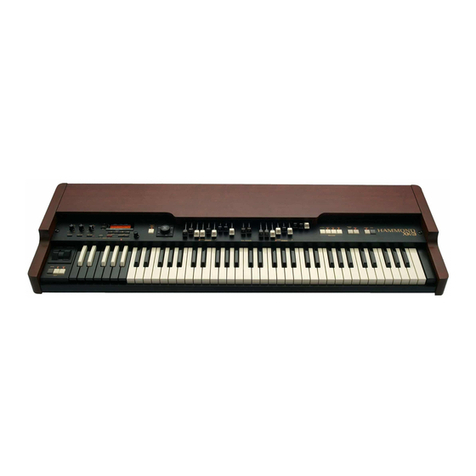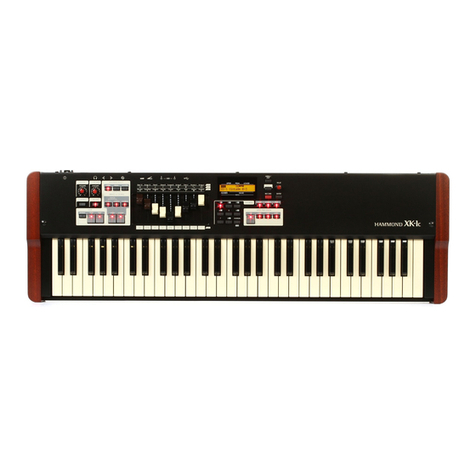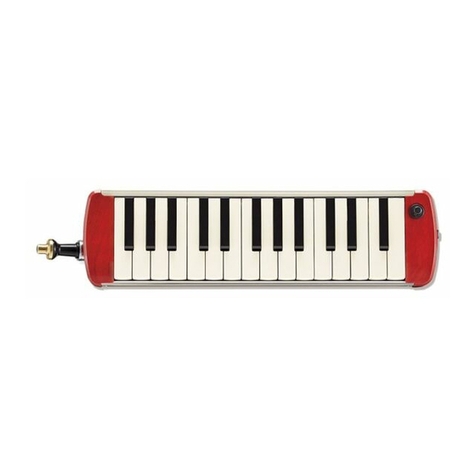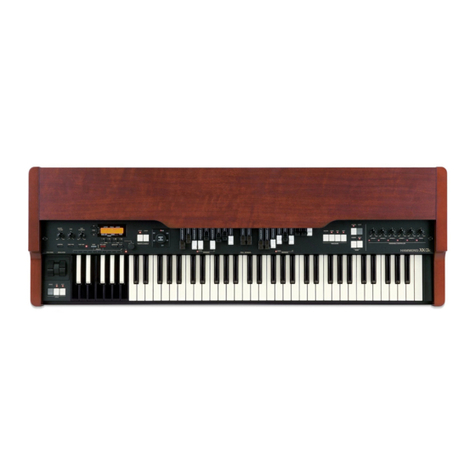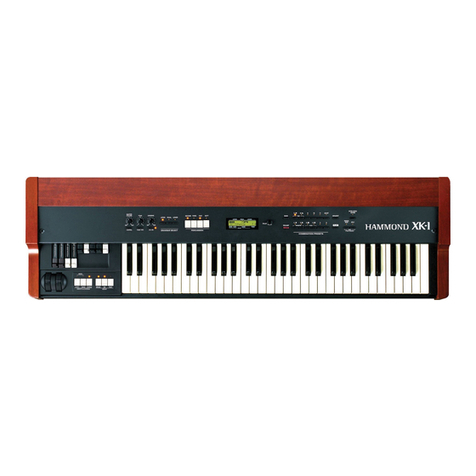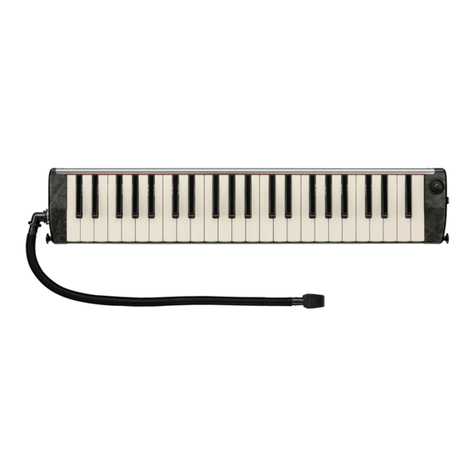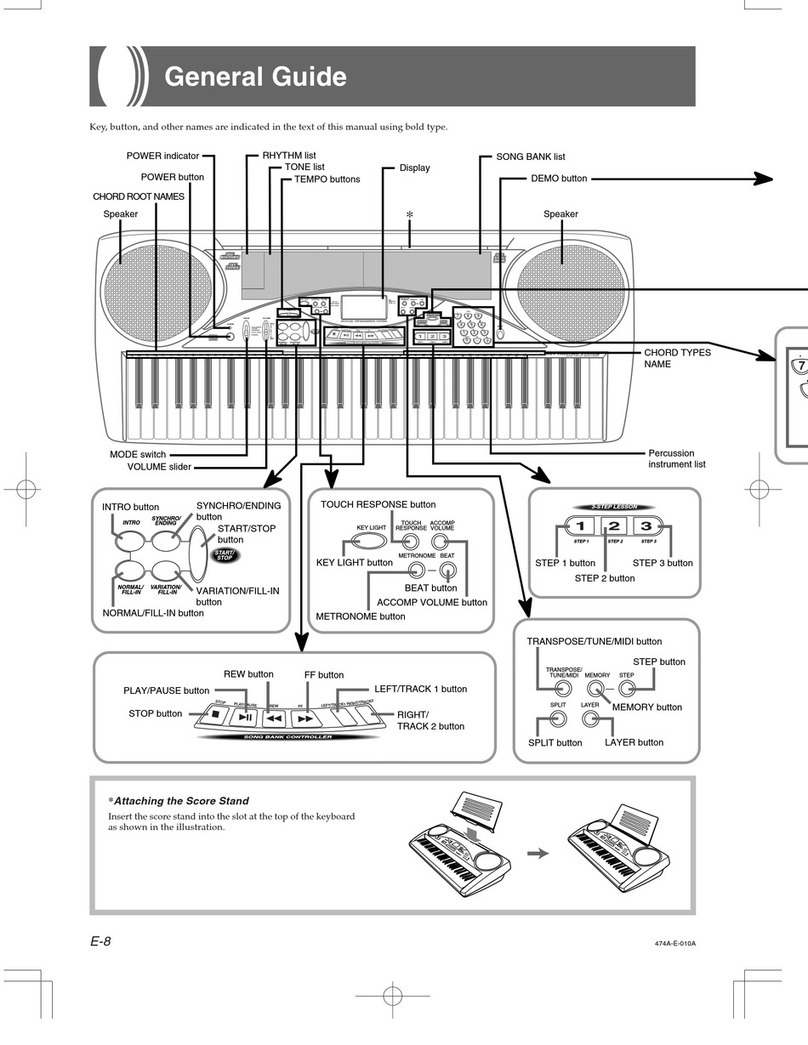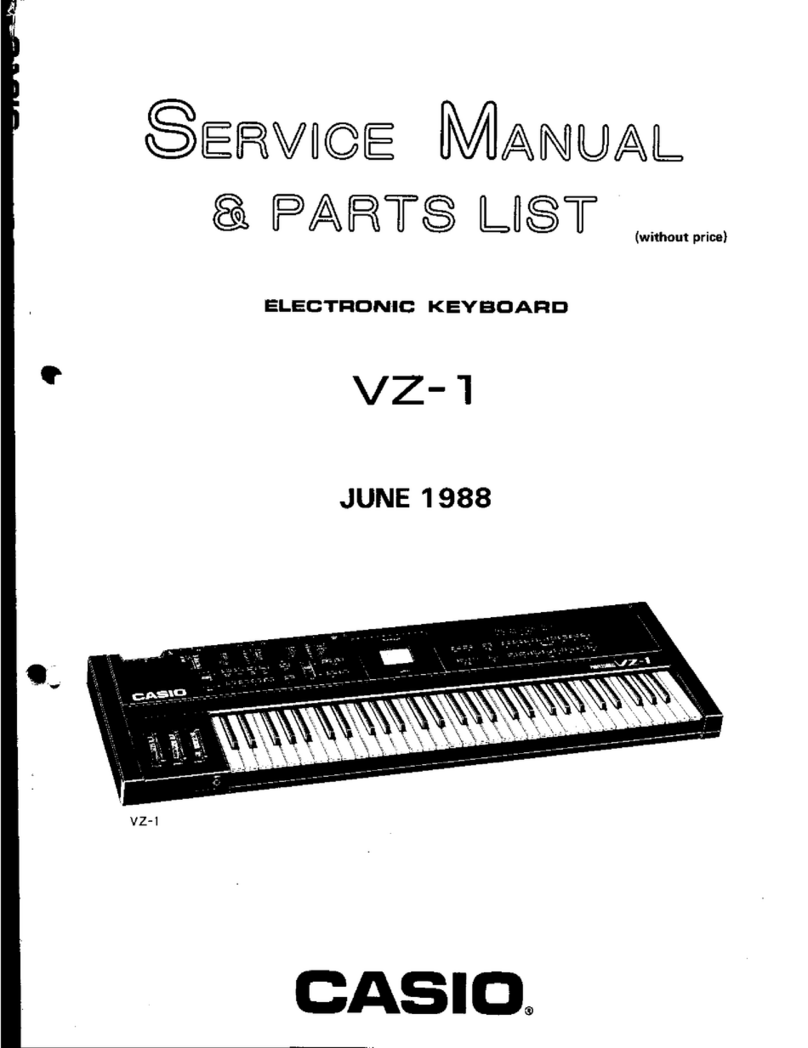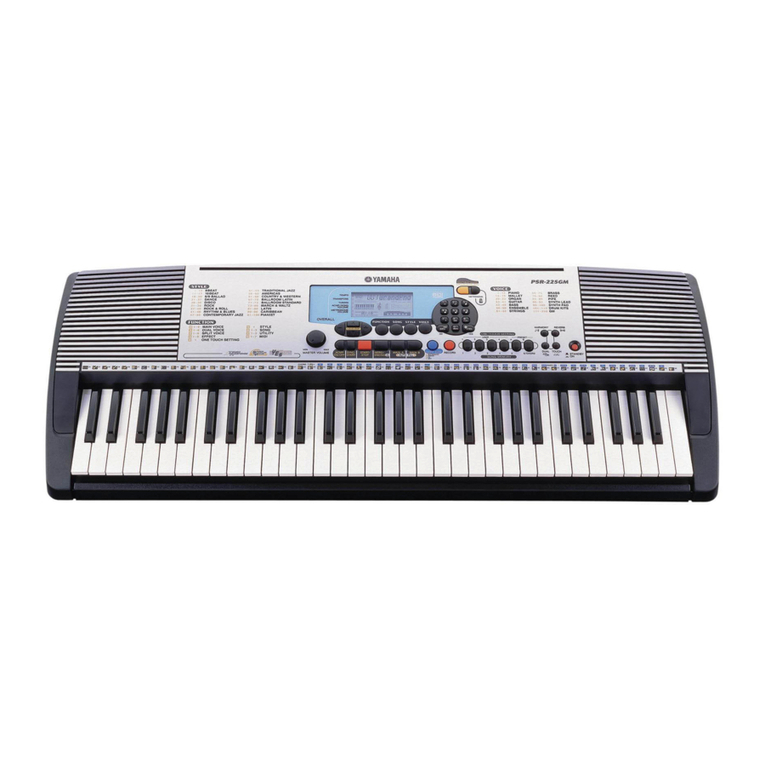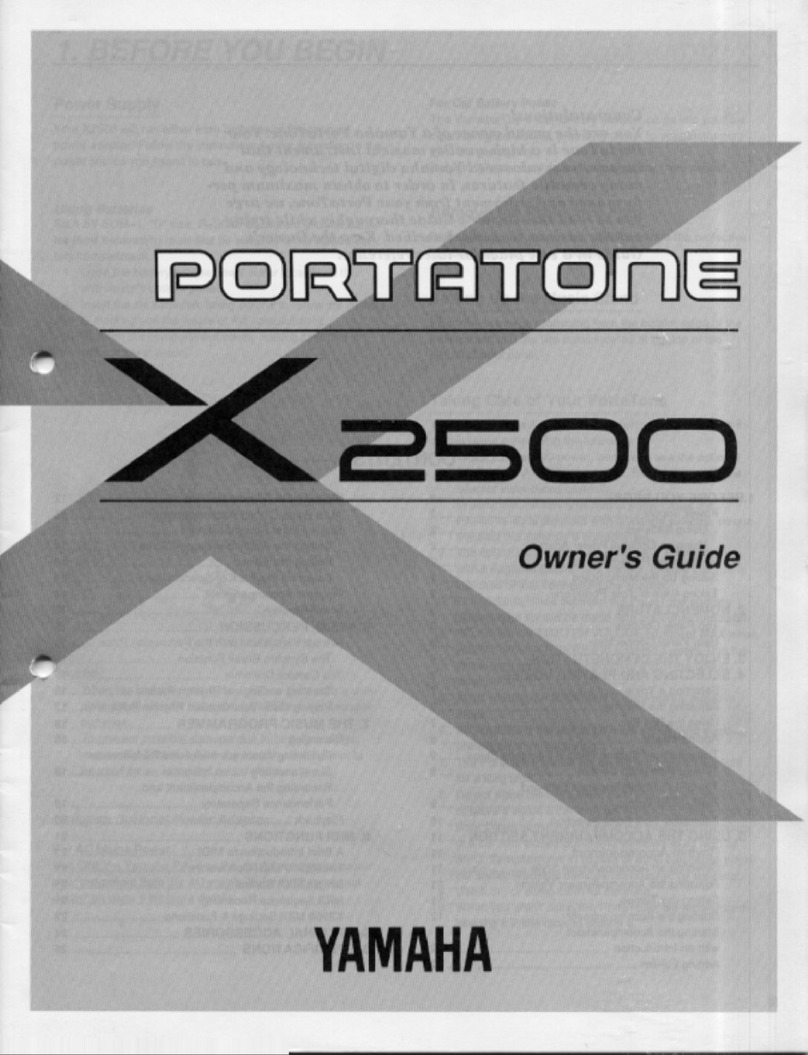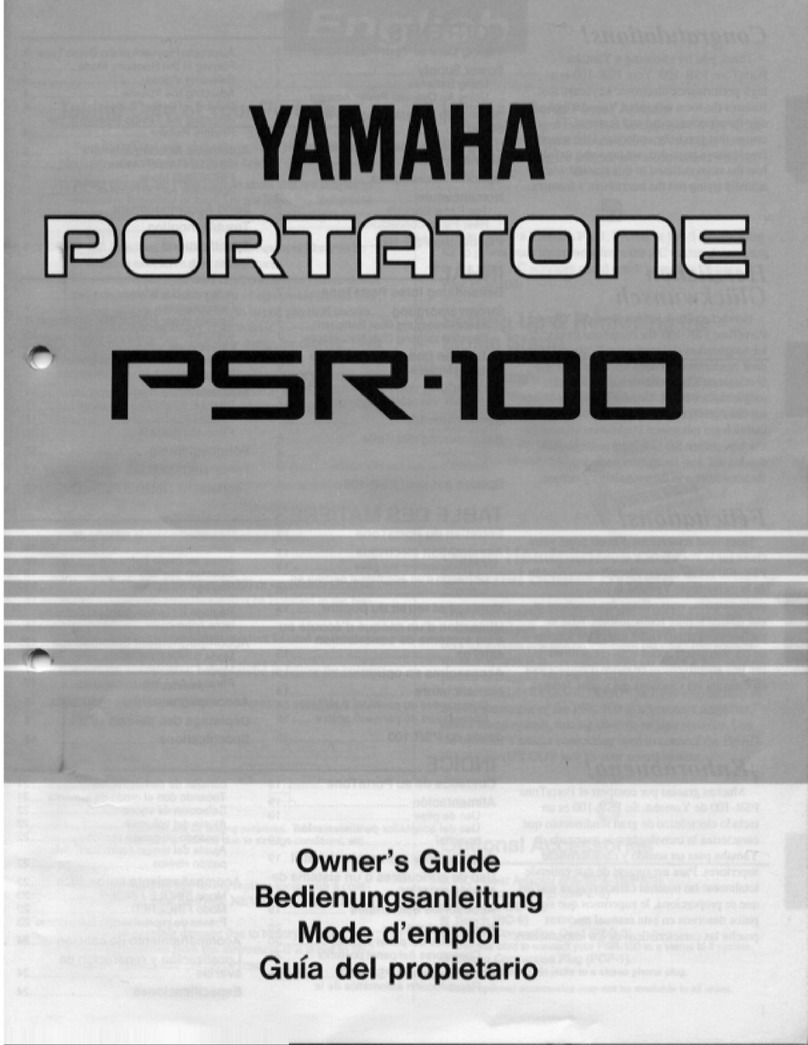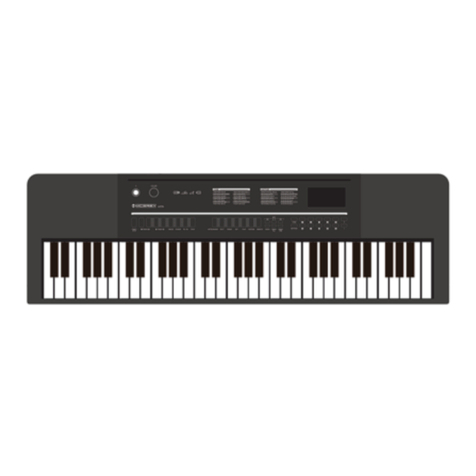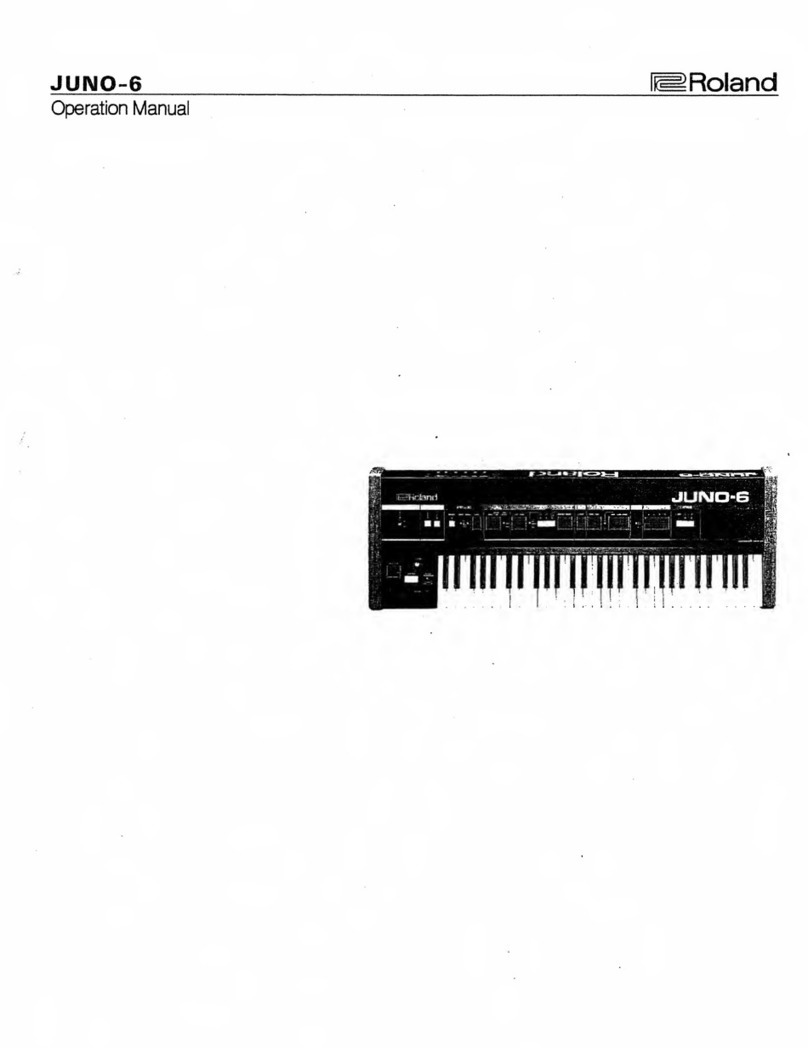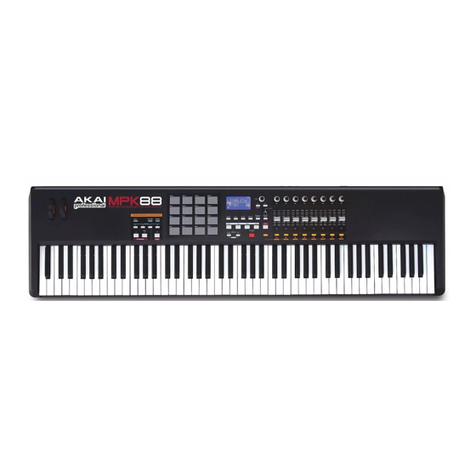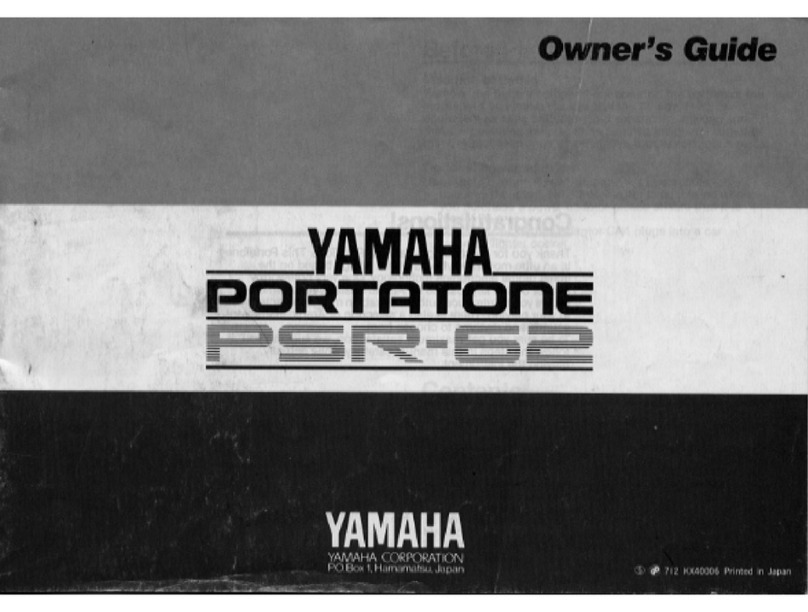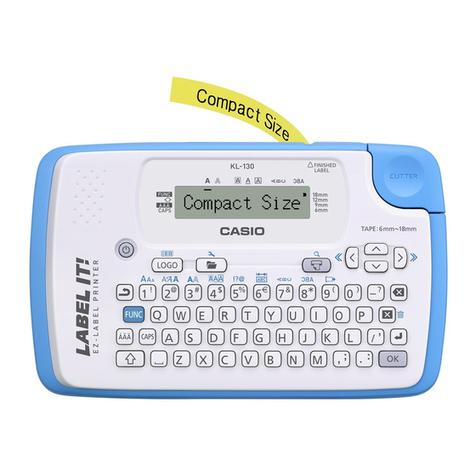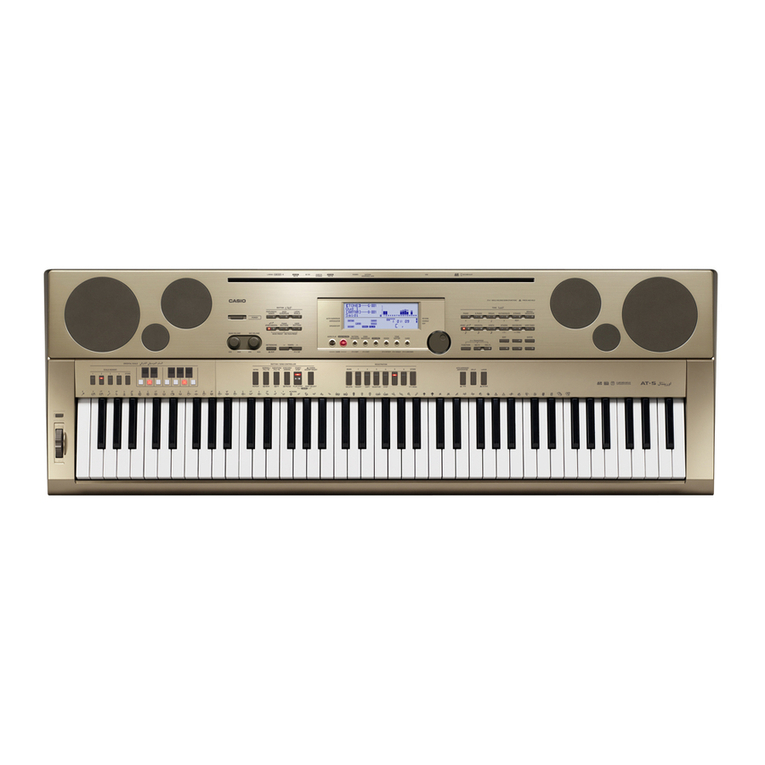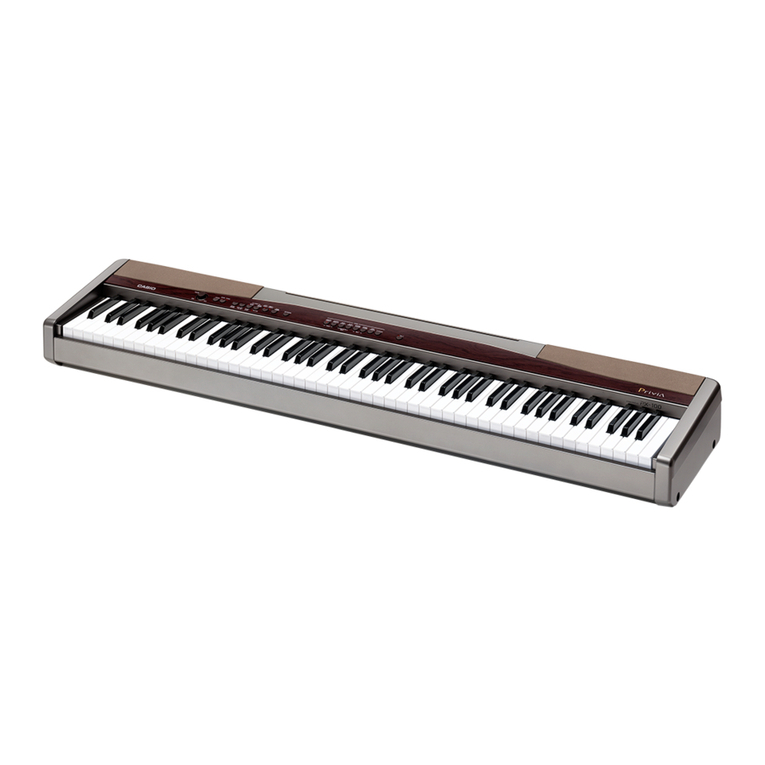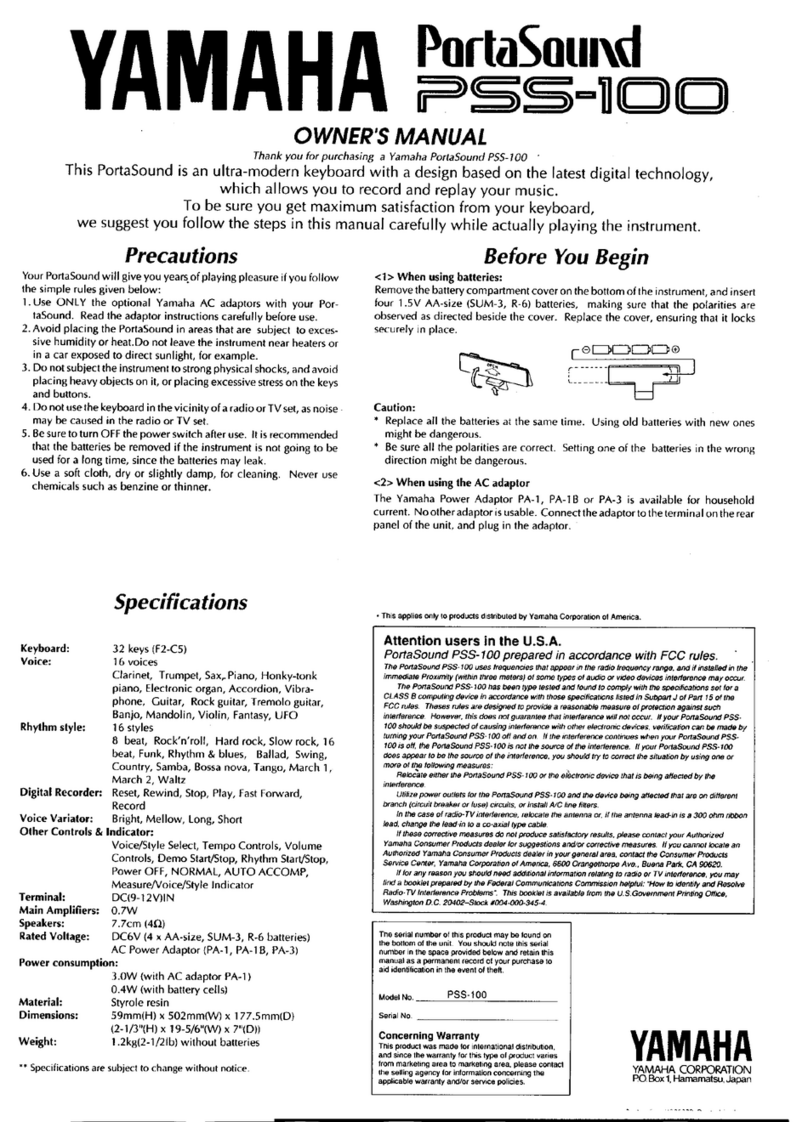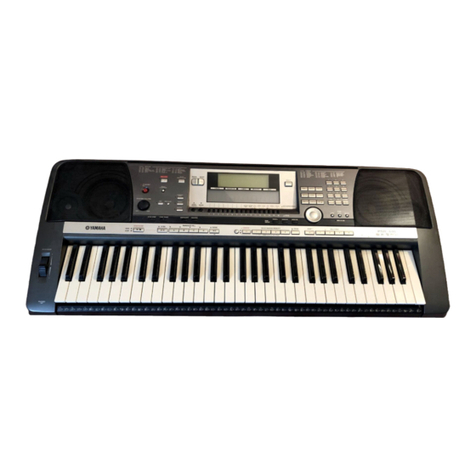
4
Introduction
NOTE: The 11-pinLesliesocketonyourSKX allows you to plug directlyinto anyLeslie speaker having an 11-pin
interface. Currentmodelsincludethe2101,3300,122XBand981. However,whenpluggingtheSKX intoasingle-
channel Leslie cabinet such as a 3300, only the Drawbars will sound through the Leslie.
NOTE: To connect the SKX to a Leslie Speaker having a different pin configuration such as an older 6-pin 122
or147ora9-pincabinetsuchas the760,770or900seriescabinets,youwillneedanadapterkitand/orConnector
Cable. ContactyourHammondDealerformoreinformationregardingwhichadapterkitand/orcableyoumayneed.
Connecting a Foot Switch
YoucanconnectanoptionalfootswitchsuchastheHammondmodelFS-9HfootswitchtoyourSKX.
Connect the foot switch plug to the jack marked "FOOT SW" on the back of the SKX.
NOTE: In order to insure proper operation of the Foot Switch, be sure to connect it when the
power to the SKX is “OFF.”
NOTE: The FOOT SW jack on your SKX instrument is “TRS-compatible,” meaning that by using a Stereo input
plug more than one Foot Switch can be used. For a complete explanation of this, consult the SPECIAL
PERFORMANCE FEATURES section.
Connecting the CU-1 Leslie Speed Switch
The CU-1 (Control Unit - 1) switch, available as an optional accessory, allows you to control the
speedseitherofaconnectedLeslieSpeakeroroftheinternaldigitalLeslie. Connectthe1/4"plugto
the jack marked "FOOT SW" on the back of the SKX.
NOTE: In order to insure proper operation of the CU-1, the FOOT SW parameter in the
CONTROL Edit Menu must be set to “CU-1.” For more information, please consult page 4 of the SPECIAL
PERFORMANCE FEATURES section.
Connecting a Damper Pedal
To connect a Damper (piano sustain) Pedal, connect the plug from the pedal into the jack marked "DAMPER" on the
back of the SKX.
Connecting an EXP-50 Expression Pedal
IfyouwishtouseaHammondEXP-50ExpressionPedal,connecttheplugfromtheEXP-50intotheEXP.PEDALjack.
Connecting a MIDI Pedalboard
IfyouwishtouseaHammondMIDIPedalboard,useaMIDIcabletoconnecttheMIDIOUTportfromthePedalboard
to the MIDI IN port of the SKX.
NOTE: If you are using an XPK-100 Pedalboard,the MIDI Channelshould beset to “3.” Also for best results, the
ControlChannelshouldbesetto“16.” PleaseconsultyourXPK-100QuickFeaturesGuideforfurtherinstructions.
Other MIDI Connections
Your SKX caninterfacewithagreat numberofMIDI-compatibledevices. SeetheMIDIsection for more information
about MIDI connections and your Hammond SKX.
Connecting a Set of Headphones
AstereoheadphonejackisprovidedontheAccessoryPanelnexttotheLINEOUTjackssothatyoumayplayorpractice
in privacy. Connect the plug froma set of stereo Headphones into the Headphone jack.
NOTE: Be sure that your headphone set has either a ¼” plug or an adapter for a ¼” plug.
